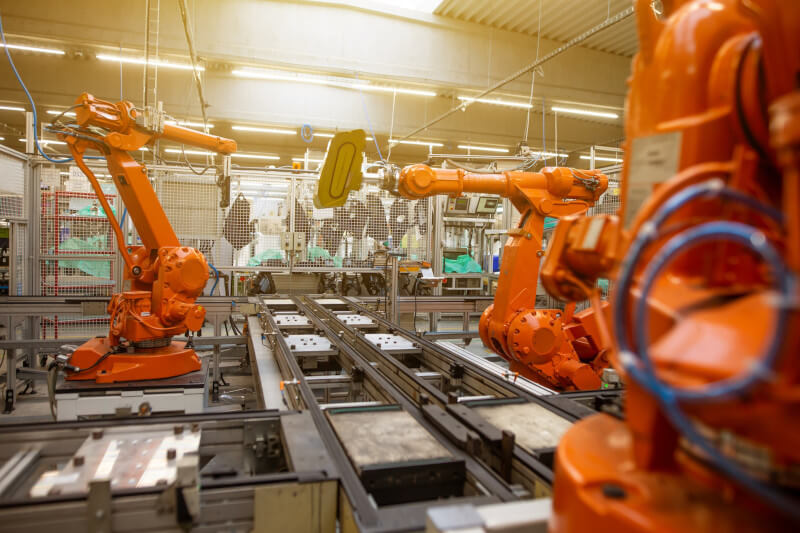Many manufacturers and distribution companies are forced to remain flexible to meet the ever-evolving demands of their customers as well as the increasingly difficult conditions of the market. In order for business leaders to successfully navigate this landscape, they need to take a step back, reevaluate the bigger picture while keeping the purpose of their company in mind, and make adjustments where necessary to guide their company toward success.
As a result of economic factors and the displacement of workers, the production and distribution sector is in the process of retooling in preparation for the arrival of a new era dominated by digital technologies.
Right now is the moment to shift your attention back to the pursuits that will strike a healthy balance between the dangers you face and the potential benefits you reap. The people in charge of making decisions who are interested in cultivating a growth mindset should think about adopting these recalibration strategies to push expansion while also maintaining relevance.
The First Tactic is Coming Up With New Ideas for Cutting Costs

The rise in inflation, which is driven by several factors including the continuation of geopolitical instability, is one of the primary economic concerns that hurt the productivity and profitability of businesses. Numerous distribution and manufacturing businesses are feeling the pinch as a result of skyrocketing prices for a variety of inputs, including materials, goods, shipping, and others. This is affecting the industries’ operating costs, output levels, and, ultimately, their profits.
These industries have been forced to reinvent with cost-savvy tactics to keep up with the competition and, more importantly, to keep their businesses afloat. This has meant that for some people, this has meant utilizing technology in order to digitize certain labor- and time-intensive tasks in order to reduce the number of hours and associated costs spent on the completion of the task.
Other companies, anticipating that these prices will continue to rise, have been stockpiling inventory in preparation for the future. However, the management consulting firm CFO Selections advises that this could be a risky move because it means that cash flow will be restricted in the short term. These funds may be redirected elsewhere to improve and grow cost efficiencies, or they may be required to react to unforeseen costs caused by further economic or climate conflicts.
Either way, they may be used. In addition, the company notes that there is a more obvious risk associated with an excess in the event that the purchased inventory isn’t used quickly enough – this risk is referred to as “spoilage, degradation, damage, thievery, or obsolescence”.
We believe that business leaders who choose digitization as a catalyst for cost efficiency are making a safer bet, particularly because this means that they are constructing business resilience to economic shocks over the long term. This is why we believe that they are making a safer bet. This is made possible by technological advancements like enterprise resource planning software. To begin, something as straightforward as automating time-consuming administrative processes through the use of ERP could, for example, reduce the costs of labor.
In addition, organizations are best prepared to streamline how they work as a result of real-time, data-driven knowledge and insight into key business processes that are made available by a consolidated, end-to-end overview provided by an ERP platform. This makes it possible for organizations to better utilize their resources. As an illustration, inventory procurement that is handled through this system can improve purchasing efficiency, which in turn helps to keep business spending under control, as the experience of one SYSPRO client demonstrates.
Ruprecht, a leading American food-solutions company, anticipates that by utilizing our ERP technology, the company will be able to save up to $2 million in annual operating costs with the assistance of the artificial intelligence that is built into the ERP (AI). Their decision-making across many aspects of the company is informed by the predictive modeling that is powered by AI. One of the key areas of focus is inventory procurement. Ever since they implemented SYSPRO ERP, they have been able to keep a sustainable and stable supply source; in fact, they were able to do this even when the pandemic was at its peak.
Adopting Cutting-edge Technology is the Second Strategy

Intelligence about the purchasing patterns of customers, the forecasting of market trends, and the effective planning of risk management. These are just a few of the advantages that can accrue to a company when it utilizes a data source that is both reliable and current. In a constructive way that boosts agility and, as a result, productivity and cost efficiency, this source allows a business to better absorb macroeconomic upsets brought about by changes such as a health pandemic or war, as well as localized operational shocks, such as equipment failures. These types of changes can have a significant impact on an economy.
The extraction and management of data are essential to maximizing the benefits of this agility, and this is where cutting-edge technology comes into play. Chatbots, which have their origins in AI technology, is an excellent way to automate the gathering of intelligent data. AI-based instruments can extract business-relevant knowledge and insight from their surroundings, for example through conversations with your consumers, to inform decision-making around activities like marketing, sales, and more.
This capability is a feature of enterprise resource planning (ERP). Beyond this, chatbots (or digital citizens, as we like to call them) can open up important human resources to respond to customer queries and evaluate customer interactions to forecast future needs for providing a superior customer experience. This will ultimately result in happier customers. They are also able to assist internal business users with time-consuming tasks such as stock lookups or ordering status, thereby generating efficiency levels that ultimately help improve both productivity and revenue.
The Third Strategy Involves Capitalizing on the Changing Employment Trends
Even though working remotely and hybrid jobs are here to stay, neither of these employment trends need to hinder the continuity of business or decrease productivity. In point of fact, we think that the opposite is true. It is evident that corporate leaders and their personnel need to be productive regardless of where their work environment might be (on or off company premises), and they need access to up-to-date data in order to make well-informed decisions.
For instance, if a company is conducting business with a customer off-site, it is essential to have immediate access to up-to-the-minute information regarding sales and service in order to deal with concerns or confidently respond to inquiries from the customer. This will help the company keep the client relationship it has established.
It should come as no surprise that digital transformation is how businesses are capitalizing on the mobile and fluid nature of today’s working environment. By giving their employees more responsibility and authority, distributors and manufacturers who have implemented portable ERP technology have increased the agility of their businesses.
Their teams can safely access and control a wide variety of processes in real-time, including scheduling, forecasting, budget management, targeting, planning, accounts, sales order, stock levels, profits, workflow, wealth management, reporting, and analytics, directly from their smartphones, whenever and wherever they choose. These kinds of investments are helping to give these companies a competitive advantage that distinguishes them from their rivals.
Lastly, Prioritizing Vulnerability Management as a Cybersecurity Measure

A faulty piece of manufacturing equipment isn’t the only thing that can bring a company to a halt. The risk of cyberattacks is rapidly increasing as more business sectors move toward digitizing their processes to meet rising customer expectations. These businesses run the risk of becoming targets if they do not implement adequate cybersecurity measures and conduct routine reviews of security vulnerabilities. Security flaws can quickly become obsolete as hackers find new ways to carry out their attacks. This not only results in downtime for the business, but it also has the potential to result in the loss of confidential data as well as the loyalty of customers, as well as other negative outcomes.
Most especially the manufacturers have significant reasons to be concerned. According to a report on threat intelligence that was just recently published by IBM, this industry overtook the sector of financial services as the one that cybercriminals targeted the most in 2021. According to the report, roughly half of all cybercrime on manufacturers was caused by security flaws that “hadn’t yet or couldn’t be repaired.” This emphasizes “the need for organizations to focus on vulnerability management.”
Keeping this piece of advice in mind, manufacturing companies would be wise to set aside some of their financial resources in order to purchase applications for vulnerability management (VM) from a respectable cybersecurity supplier. Virtual machines conduct an audit of an organization’s IT resources, looking for vulnerabilities that call for immediate security measures. It is an expense that must be incurred up front, but it will more than pay for itself in the long run by lowering the risk of cyberattacks, which could result in catastrophic financial losses.
The objective of any astute company should be to safeguard its position in the future. The people in charge of making decisions in businesses need to take a systematic approach, which is helped to take shape by the information provided in this article. The process of recalibrating requires coming up with creative ways to cut costs without sacrificing the delivery of high-quality services. In turn, it is possible to achieve cost reductions through investments in cutting-edge technology that are made for the short term but yield significant returns over the long term.
This intelligent technology streamlines business-critical processes to free up valuable human resources, who then have the opportunity to direct their insights into other tasks that generate revenue. Through predictive modeling, this technology also facilitates informed decision-making, which helps to ensure that a company is ready to face any potential risks that may arise. Regarding risks one last time, business leaders must strike a balance between making progress and remaining vulnerable.
Because of this, we strongly advise that you conduct a risk assessment of your cybersecurity to ensure that the benefits that technology has launched are not overshadowed by the financial repercussions that would result from a cyberattack. To summarize, your recalibration for success must be motivated by investments in technology that are both responsible and prudent. In a world that is constantly shifting, this is the only way to keep up with the competition and maintain your relevance.





